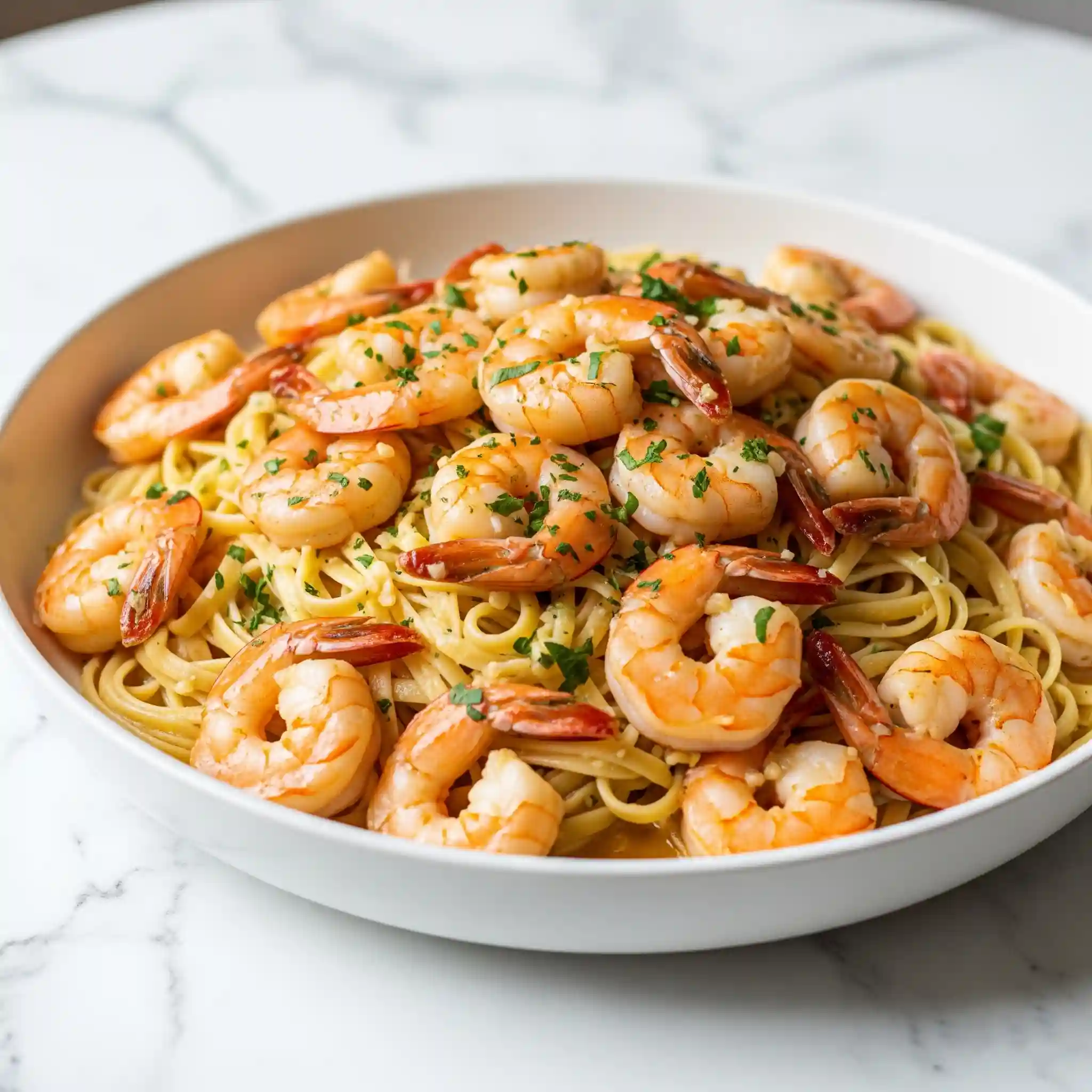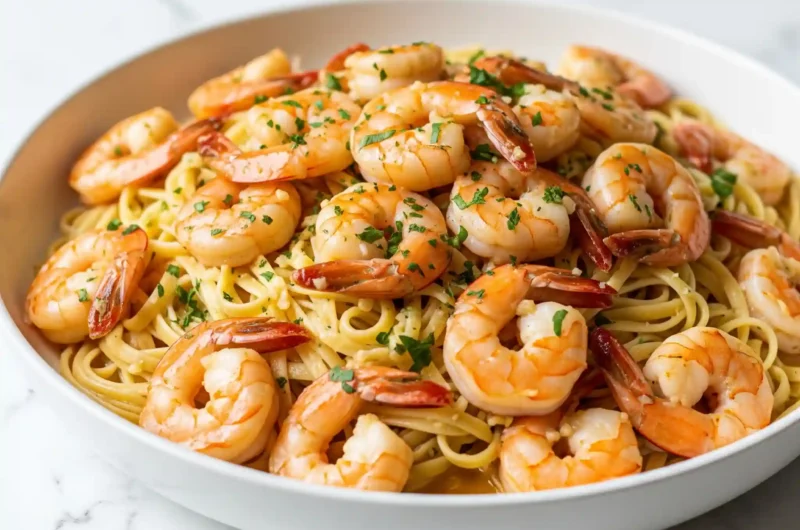30-Minute Shrimp Scampi with Pasta: Your New Sunday Dinner Favorite
I can still perfectly recall the scent of a roast chicken filling our home—a scent that meant Sunday had truly arrived. But let’s be honest: in the whirlwind of modern life, those all-day cooking affairs are few and far between. This is where Shrimp Scampi with Pasta has become our new Sunday hero. It’s our secret weapon for reclaiming the evening, proving that tradition isn’t about the clock; it’s about the connection.
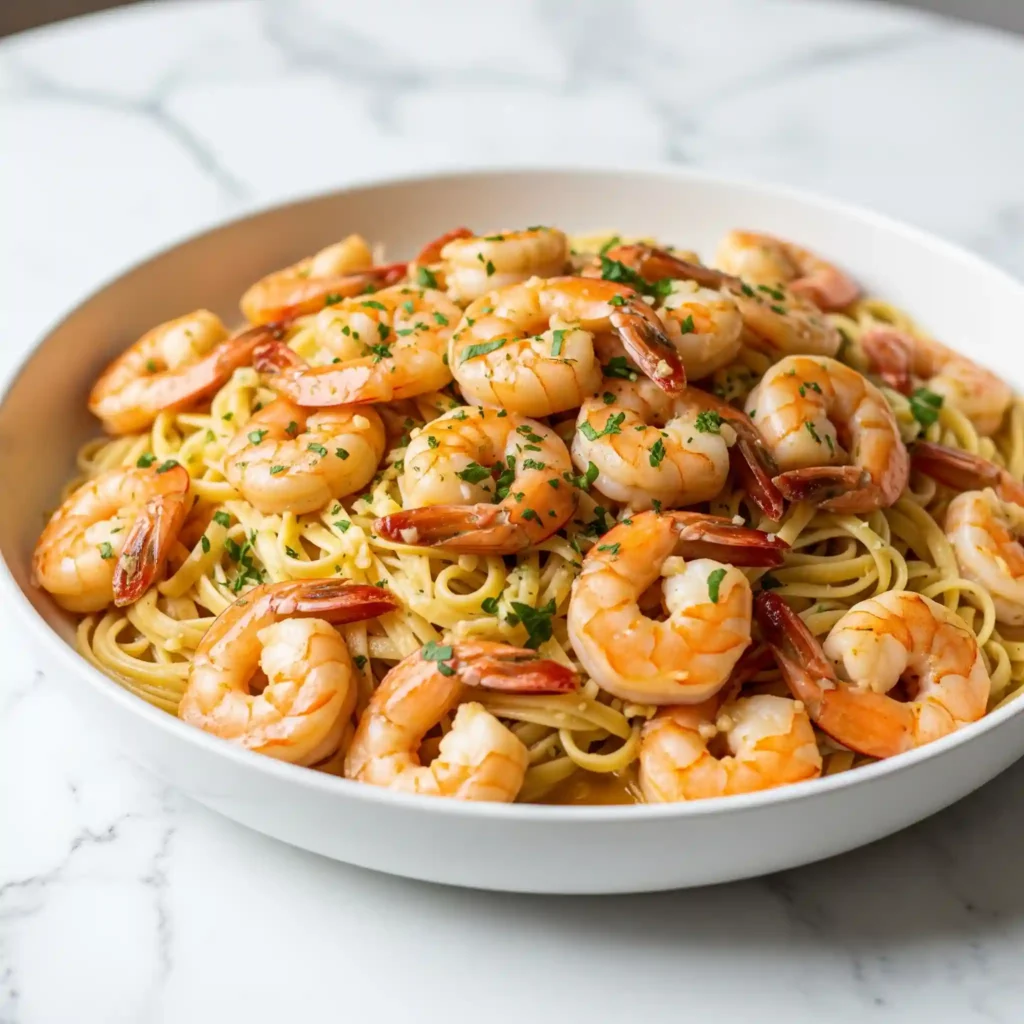
Shrimp Scampi with Pasta feels elegant and special, like something you’d order at a nice Italian-American restaurant, but it comes together in under 30 minutes. It’s the perfect answer for a modern family that wants to keep the tradition of a beautiful meal without giving up their whole day. It’s one of my favorite quick and easy Sunday dinner ideas because it delivers that “wow” factor with minimal stress.
Before we start, here’s a fun fact you can share at the dinner table. The name “Shrimp Scampi” is a charming quirk of culinary history. In Italy, “scampi” are actually small, lobster-like crustaceans. When Italian immigrants came to the U.S., they couldn’t find their beloved scampi, so they cleverly adapted the recipe using the shrimp that were readily available here. They kept the classic preparation of garlic, butter, and white wine, and the name “Shrimp Scampi” was born. So, you’re not just making dinner; you’re making a delicious piece of American history.
My Secrets to Perfect Shrimp Scampi with Pasta
Over the years, I’ve learned that a few small details make all the difference. These are the secrets that will take your scampi from good to unforgettable.
- The Plump Shrimp Pledge (No More Rubbery Shrimp!) This is my most important tip. To guarantee your shrimp are plump and juicy, not tough, give them a quick brine. Toss the raw, peeled shrimp with a bit of kosher salt and a pinch of baking soda. Let them sit for 15 minutes while you prep everything else. The baking soda magically helps the shrimp retain moisture. The result? A shrimp that has a satisfyingly plump ‘snap’ when you bite into it, banishing any memory of sad, rubbery shrimp forever.
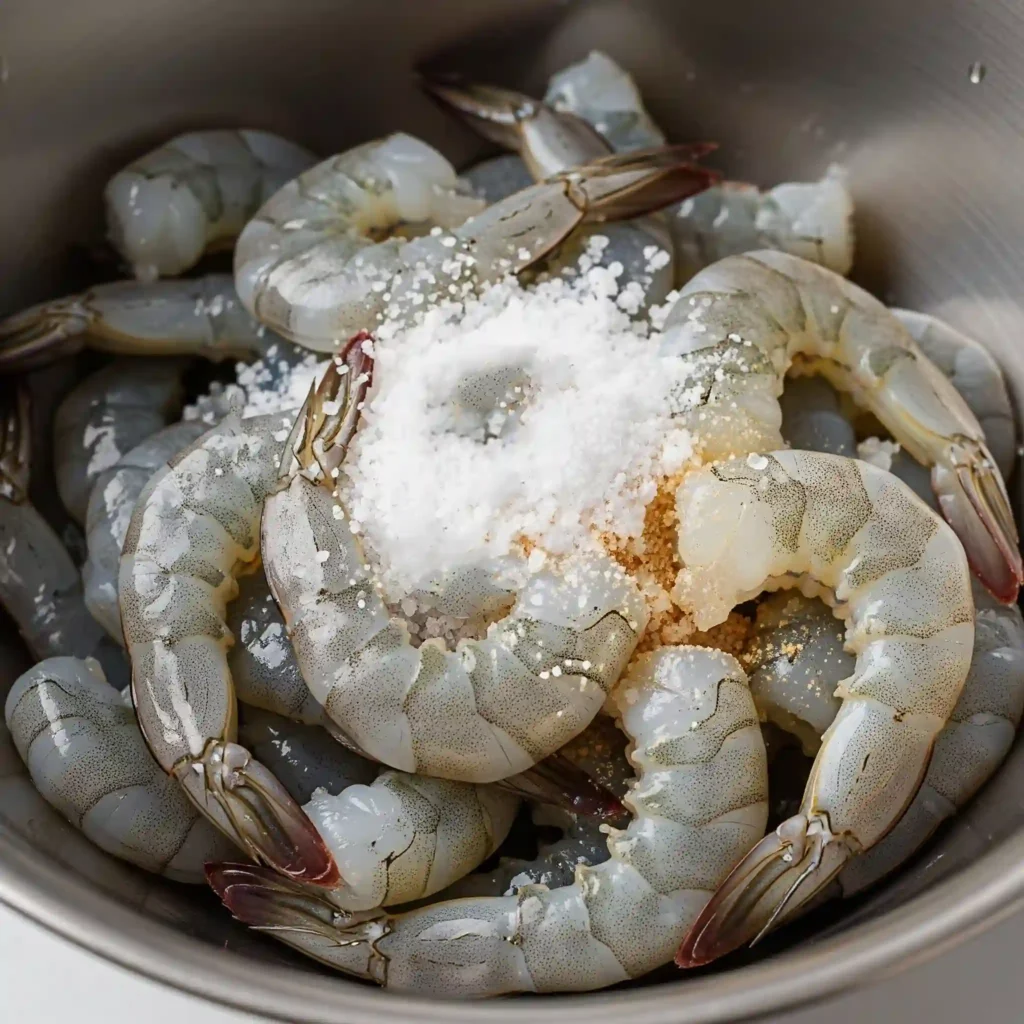
- The Secret to a Silky, Not Oily, Sauce. A broken, oily sauce is the most common scampi pitfall. The key to a smooth, creamy sauce that clings to the pasta is a technique called emulsification. After you’ve cooked your garlic and reduced the wine, remove the pan from the heat. Then, begin coaxing in the cold butter, one piece at a time, while constantly swirling the pan. You are creating magic here, convincing the fat and the wine to become one. The result is a seamless, velvety sauce that lovingly coats every single strand of pasta, instead of pooling sadly at the bottom of the bowl.
- Prepare Everything First (“Mise en Place”). This dish cooks in a flash. Once you start, you won’t have time to chop garlic or juice a lemon. Before you even turn on the stove, have every single ingredient prepped and ready to go. This is what chefs call “mise en place,” and for a quick recipe like this, it’s the key to a calm and successful cooking experience.
- The Great Shrimp Tail Debate: My Final Word. Some people leave the tails on for presentation. I have a firm opinion on this: for a pasta dish, take the tails off. No one wants to wrestle with a messy, sauce-covered shrimp tail while trying to enjoy a beautiful bowl of pasta. Sunday dinner should be about pure comfort and connection. Taking the tails off is a small act of love—it means no one has to interrupt a good story to perform messy surgery on their plate. It’s about making the experience of eating as effortless and joyful as the cooking.
- Use Wine You Would Actually Drink. Please, step away from the “cooking wine.” It’s often loaded with salt and will give your sauce a harsh flavor. The rule is simple: if you wouldn’t want to drink a glass of it, don’t put it in your food. A dry, crisp white wine like a Pinot Grigio or Sauvignon Blanc is perfect. Plus, you’ll have the rest of the bottle to enjoy with your meal.
- Don’t Be Shy with Garlic, But Don’t Burn It. Garlic is the star here, but burnt garlic is bitter and will ruin the entire dish. Cook the minced garlic over medium heat for just 30 to 60 seconds, only until it smells fragrant. I also like to grate one or two cloves on a Microplane; the finer texture melts into the sauce, giving you garlic flavor in every bite without large pieces.
- Never, Ever Dump Your Pasta Water. That cloudy water left over from boiling your pasta is liquid gold. It’s full of starch, which is a natural thickener and helps the sauce emulsify beautifully. Before you drain your pasta, reserve at least a cup of this water. Adding a few splashes at the end is the ultimate secret to a sauce that perfectly coats every noodle.
- Cook the Shrimp in Batches. If you overcrowd the pan, the shrimp will steam in their own juices instead of searing. They’ll end up pale and soft. To get that beautiful pink color and perfect texture, cook the shrimp in a single layer, in two batches if needed. This ensures each shrimp gets nicely browned while staying tender inside.
Your Scampi Questions, Answered
“Help! My sauce is thin and watery.” This usually happens for two reasons. First, you may not have let the wine reduce enough. You want to let it simmer until it has reduced by about half, which concentrates the flavor. Second, you probably forgot to add the starchy pasta water at the end. A few tablespoons will thicken the sauce beautifully.
“Can I really use frozen shrimp?” Absolutely. In fact, for most of us who don’t live by the coast, high-quality frozen shrimp are often fresher than the “fresh” ones at the seafood counter, which are typically just thawed frozen shrimp anyway. The key is to thaw them correctly. The best way is overnight in the refrigerator. For a quicker method, place them in a sealed bag and submerge them in a bowl of cold water.
“What if I don’t want to cook with wine?” No problem. A low-sodium chicken broth is a great substitute. However, you’ll need to add back the acidity that the wine provides. Add a generous squeeze of fresh lemon juice to the broth to balance the richness of the butter.
“Why are my shrimp always tough and rubbery?” In one word: overcooking. Shrimp cook incredibly fast. A good rule of thumb is the shape test: a gentle “C” shape means cooked, while a tight “O” shape means overcooked . Cook them for just a minute or two per side until they are just pink, then immediately remove them from the pan. You’ll add them back into the sauce at the very end just to warm them through.
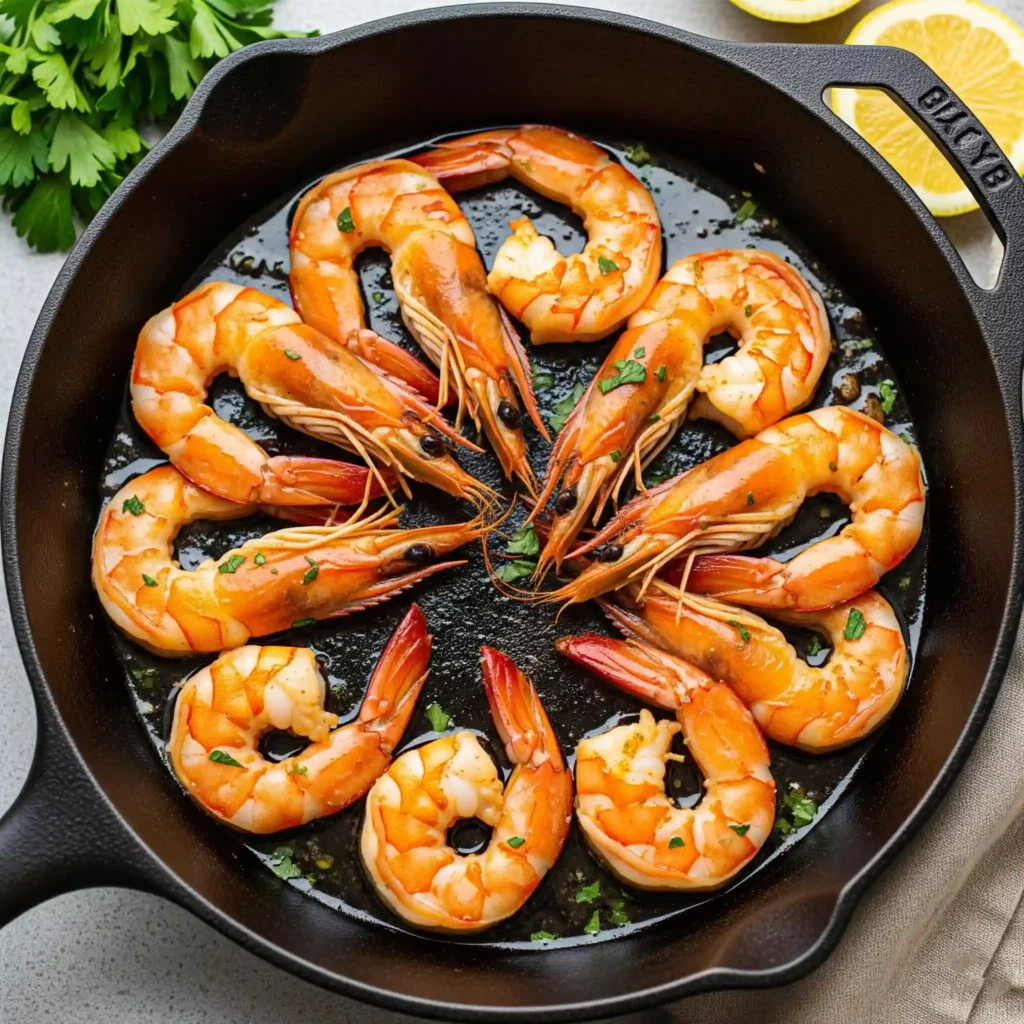
“What’s the best kind of pasta to use?” While some recipes call for angel hair, I find it’s too delicate and can get overwhelmed by the rich sauce. I strongly recommend a sturdier long pasta like linguine or spaghetti. They have enough body to stand up to the garlic-butter sauce.
Building the Perfect Sunday Plate
A great main dish deserves great partners. This is how you turn a simple pasta dish into a full, satisfying meal, creating one of the best Sunday dinner ideas.
- Crusty Bread. This is non-negotiable. You need something to mop up every last drop of that incredible garlic-butter sauce. A simple baguette or a loaf of rustic Italian bread is perfect.
- A Simple Green Salad. The rich scampi needs something fresh and acidic to cut through it. A simple salad of arugula or romaine with a light lemon vinaigrette is the perfect counterpoint. A classic Caesar or Greek salad also works wonderfully .
- Roasted Vegetables. A side of simple roasted vegetables rounds out the meal. Lemon-roasted asparagus or garlic-roasted broccoli are fantastic choices. You can cook them in the oven while the pasta boils, so they don’t require much extra effort.
My Fail-Proof Shrimp Scampi with Pasta
4
servings15
minutes20
minutes35
minutesThis recipe brings all my tips together for a dish that is quick enough for a weeknight but special enough for Sunday.
Ingredients
1 lb. linguine or spaghetti
1 ¼ lbs. large shrimp (21-25 per pound), peeled, deveined, and tails removed
¾ tsp. kosher salt
¼ tsp. baking soda
⅓ cup extra-virgin olive oil
6 tbsp. unsalted butter, cut into 6 pieces and kept cold
6 cloves garlic, minced
¾ cup shallots, thinly sliced
½ tsp. red pepper flakes
¾ cup dry white wine (like Pinot Grigio or Sauvignon Blanc)
3 tbsp. fresh lemon juice
1 tsp. lemon zest
¼ cup fresh flat-leaf parsley, chopped
Freshly ground black pepper
Directions
- Prep the Shrimp: In a medium bowl, toss the shrimp with the kosher salt and baking soda. Set aside for 15 minutes. Use this time to get all your other ingredients chopped and measured.
- Cook the Pasta: Bring a large pot of generously salted water to a boil. Add the linguine and cook until al dente (still has a slight bite). Before draining, reserve 1 ½ cups of the pasta water. Drain the pasta.
- Sear the Shrimp: While the pasta cooks, heat 2 tablespoons of olive oil in your large skillet over medium-high heat. Add the shrimp in a single layer (work in two batches if needed) and cook for 1-2 minutes per side, until just pink. Use tongs to transfer the shrimp to a plate.
- Start the Sauce: Reduce the heat to medium. Add the remaining olive oil and the sliced shallots to the skillet. Cook for about 2 minutes until they soften. Add the minced garlic and red pepper flakes and cook for another 30-60 seconds until fragrant.
- Deglaze and Reduce: Pour in the white wine to deglaze the pan, scraping up any browned bits from the bottom. Bring to a simmer and cook for about 3 minutes, until the wine has reduced by about half.
- Emulsify the Sauce: Remove the pan from the heat. Add the cold butter, one piece at a time, swirling the pan continuously until the butter is melted and the sauce is smooth and creamy.
- Bring It All Together: Return the pan to low heat. Add the drained pasta, the cooked shrimp (along with any juices from the plate), the lemon juice, lemon zest, and parsley. Add ½ cup of the reserved pasta water and use your tongs to toss everything together for 1-2 minutes, until the sauce coats the pasta. If it seems dry, add more pasta water a little at a time.
- Serve Immediately: Taste and season with salt and pepper as needed. Serve right away in warm bowls, with extra parsley and lemon wedges on the side.
